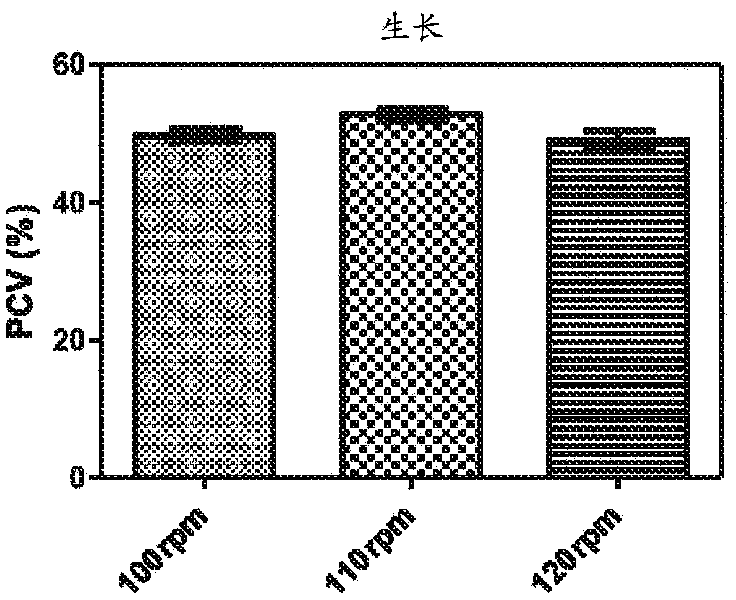Polyphenol production by Vaccinium myrtillus cell cultures
A technology of cell culture and culture, applied in the field of polyphenol production through European lingonberry cell culture, which can solve the problems of unreliable supply of berries, limited number of berries, and manual harvesting
- Summary
- Abstract
- Description
- Claims
- Application Information
AI Technical Summary
Problems solved by technology
Method used
Image
Examples
example 1
[0024] Example 1: Surface sterilization and seed germination
[0025] Bilberry seeds were obtained from Horizon Herbs, Oregon (Horizon Herbs, Oregon). The leaves and stems of the lingonberry (Irish cranberry) used in this example and the examples below were collected from the National Clonal Germplasm Repository (NCGR) in Corvallis, Oregon Segments And Unripe Berries.
[0026] Wash the leaves, stem segments and immature berries in running water for 20 minutes, and then in 75% ethanol for 1 minute. The stems are then cut into smaller pieces. Stems, leaves and immature berries were subsequently washed in 25% sodium hypochlorite (v / v) for 15 min and then washed 5 times in sterile distilled water.
[0027] Seeds (obtained from Horizon Herbs, Oregon) were surface sterilized by first washing in 75% ethanol for 1 minute. This was followed by a 15 min wash in 25% sodium hypochlorite (v / v), followed by 5 washes in sterile distilled water. The seeds were then suspended in 0.1% ag...
example 2
[0028] Example 2. Callus induction from Vaccinium seedlings grown in vitro
[0029] More proliferative growth and friable callus are extremely important characteristics of a successful cell line. This example describes methods and media conditions optimized to initiate and maintain callus from various explants derived from in vitro grown Vaccinium seedlings.
[0030] Calli are initiated from hypocotyledonous rachis, cotyledons, leaves, stem segments or roots of in vitro grown seedlings. The plant parts were cut into 5mm pieces. All media were sterilized by autoclaving at 121 °C and 15 PSI (pounds per square inch) for 20 minutes unless otherwise indicated. All growth regulators were filter sterilized and added after autoclaving unless otherwise indicated. All cultures were kept in the dark at 25°C unless otherwise indicated.
[0031] The explants were placed on various callus induction media (Table 1). The plates were kept in the dark at 25°C. After placing the explants...
example 3
[0033] Example 3: Callus induction from Vaccinium tissue collected from NCGR
[0034] This example describes the methods and media formulations used to initiate and maintain callus from various explants (from berries, nodes, internodes or leaves) derived from field-grown Vaccinium bilberry plants.
[0035] Ripe leaves and stems and immature berries were surface sterilized as described above. Plant parts were cut into smaller 5 mm segments and then explanted into media VM1516 and VM1491. The berries were cut open under sterile conditions and the skins were placed on culture plates with medium. Remove any berry flesh before explanting.
[0036] The plates were kept in the dark at 25°C. Typically, callus was observed after initial explantation of material on VM1516 for 4 weeks and on VM1491 for 6 weeks. Referring to leaf explants, the overall callus induction rate was 53%. Calli from leaf explants were produced in VM1491 as well as in medium VM1516 (73% of the initial expl...
PUM
 Login to View More
Login to View More Abstract
Description
Claims
Application Information
 Login to View More
Login to View More - R&D
- Intellectual Property
- Life Sciences
- Materials
- Tech Scout
- Unparalleled Data Quality
- Higher Quality Content
- 60% Fewer Hallucinations
Browse by: Latest US Patents, China's latest patents, Technical Efficacy Thesaurus, Application Domain, Technology Topic, Popular Technical Reports.
© 2025 PatSnap. All rights reserved.Legal|Privacy policy|Modern Slavery Act Transparency Statement|Sitemap|About US| Contact US: help@patsnap.com



